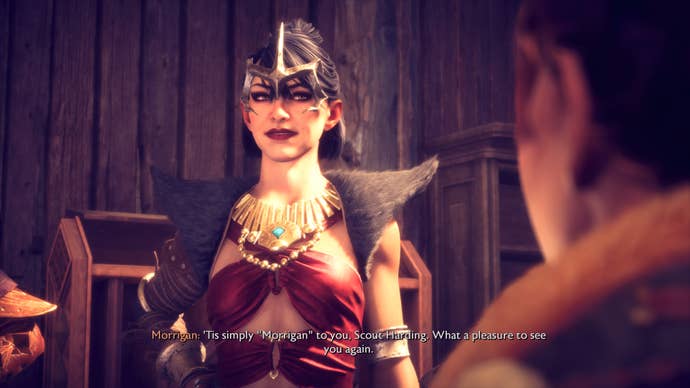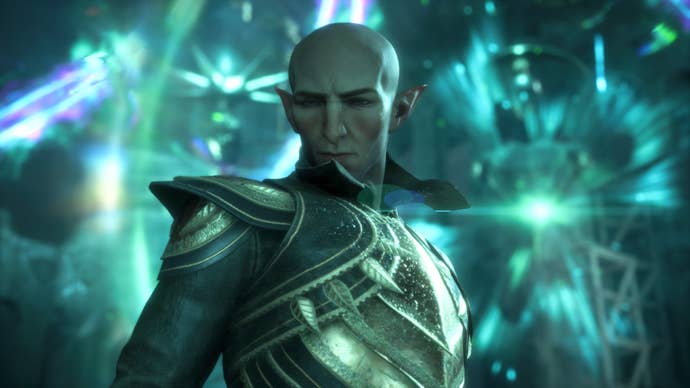Original creator David Gaider on how “some of the big mysteries are being solved”.
How much did BioWare know about future events when first developing the series more than 20 years ago?
Why lay so much lore-track ahead of yourself if you don’t think you’ll ever get there?

But look more closely at Origins and there are big clues suggesting BioWaredidknow about future Dragon Age events.
Does her existence mean Solas was known about back then too?
But the concept for Solas, as a character who was Fen’Harel in disguise, was a newer idea.

“Oh yeah,” Gaider says.
But why have so much lore if you’re not certain you’ll get to ever realise it?
Well, to create a believable illusion.

A place with history, rather than a Western set that was all facade and no substance.
In doing this, Dragon Age veiled its truths behind biases.
The church-like organisation of the Chantry proclaims one truth, while the elves and dwarves proclaim another.

Sidenote: you could experience this yourself through different racial origin stories in Dragon Age: Origins.
This way, there’s no one, objective, irrefutable, truth.
“To get the truth, you kind of have to pick between the lines,” Gaider says.

All secrets end there.
Did Gaider know what was in the Black City when he laid down Origins' lore?
That’s the question - and it startles me how casually he answers this.
“Oh, yeah,” he says.
“What was in the Black City: that’s the uber-plot.
“Was it as detailed in the first draft of the world?”
I had an idea of the early history because that’s where I started making the world.
Then I expanded the world and the uber-plot bubbled out of that.”
The world was known as Peldea back then.
And if that sounds familiar to any fans of The Sandman among you, it should.
“I’d say The Sandman series was probably fairly prominently in my head,” says Gaider.
“I liked that amorphous geography that was born from the psyche of collective humanity.
It’s a lot to take in, but it reinforces the admiration I have for Dragon Age.
“But yes, some of the big mysteries are being solved.
I mean, will they one day definitively tell you about the Maker?
Will we crack the big mysteries of the world and just make them answered finally?
And does that ruin one of the central precepts that Dragon Age is founded upon?
Maybe,” he says.
Eventually you got to pony up.”